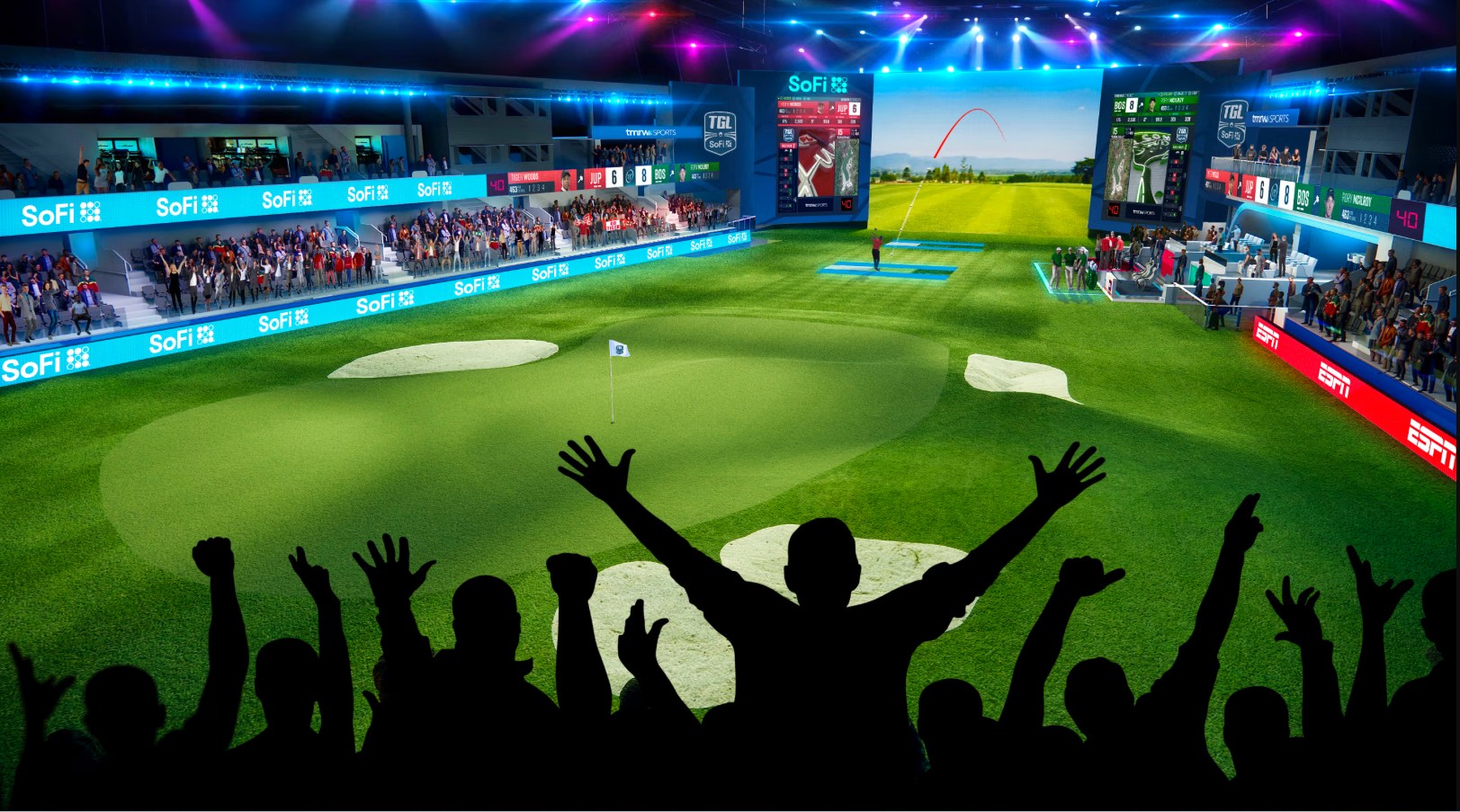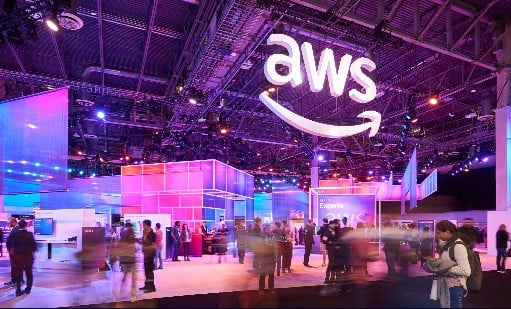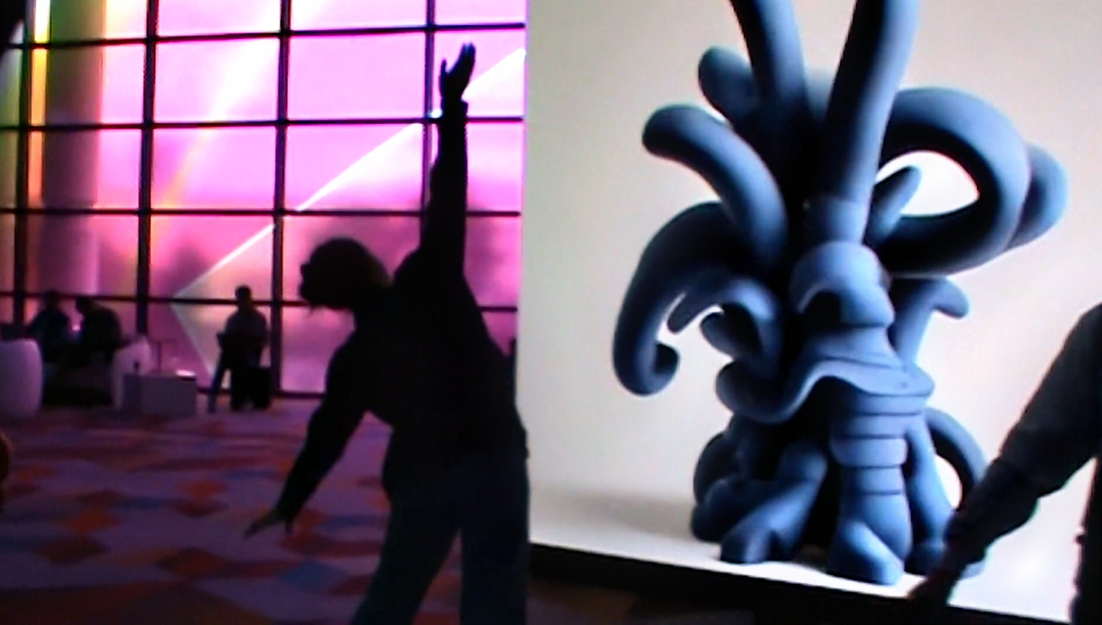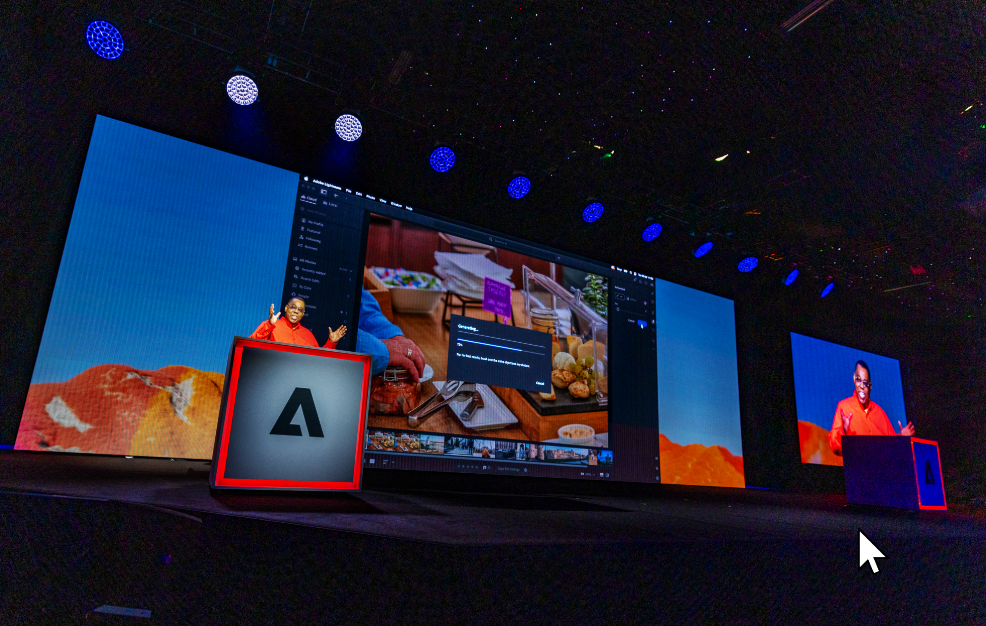Experiential Marketing Visionaries: How to Transform Corporate Events in 2025
Or, what is AI and technology good for in corporate events (except taking our jobs)?
In 2025, the line between digital and physical event experiences blurred further with experiential marketing incorporated into corporate events. From AI-optimized signage to interactive LED tunnels, the world of corporate events was reshaped by immersive event design with cutting-edge technology. In 2025, three events in particular—TGL Golf League, AWS re:Invent, and Adobe MAX—set new standards in the corporate events industry, and for corporate event planners worldwide, by harmonizing creative strategy, production design, AV engineering, and data systems to revolutionize experiential marketing in large-scale conferences. This article peels back the layers, examining the technologies and production teams behind the magic, and exploring their implications for your next corporate event, conference, or immersive brand activation.
First of all, what is spatial design for immersive corporate events? Spatial design for corporate events goes beyond aesthetic layout—it’s about creating immersive environments that guide behavior, enhance engagement, and reinforce brand identity through the thoughtful arrangement of physical and digital elements in the event space. Its goals can be any one of these below, or a combination:
-
Shape how people move through a space (wayfinding, traffic flow, sponsor signage optimization)
-
Control visual and emotional impact (staging for brand storytelling, lighting for emotional impact)
-
Enhance sensory engagement (texture, sound, interactivity, and even smells, are thoughtfully designed)
-
Optimize networking and ROI (design of zones for gathering, demoing brand products or services, and relaxing and recharging, plus tools to monitor attendees and traffic through the flow)
TGL Golf League: Simulated Sports Meets Immersive Storytelling
The TGL Golf League, co-founded by Tiger Woods and Rory McIlroy, introduced fans to a new kind of golf experience: one played inside a high-tech, immersive arena. Hosted at the custom-built SoFi Center in Palm Beach Gardens, Florida, the venue fuses golf simulation at a live sporting event, and theatrical production values, into one unforgettable space. The SoFi Center hosted its inaugural match on January 7, 2025. Though the space is one-of-a-kind, corporate event planners can incorporate visuals and gamification inspired by the SoFi Center into your next immersive brand event.


Key Features:
- LED Tunnel: Fans enter the arena through a dynamic, color-changing tunnel designed to set the tone for a futuristic sports experience.
- Turf Seating and Immersive Viewing: Spectators sat on synthetic turf for a closer, more tactile connection to the game.
- AI Caddies & Gamified Leaderboards: Full Swing Golf‘s radar data captured every shot, instantly visualized on IMAX-size Samsung LED displays and gamified scoreboards.
Tools & Technologies Used:
- Samsung XRB & VMR Series Displays for immersive visuals
- Full Swing KIT Launch Monitors for real-time shot analytics
- SmartPin Cam for motion-tracked broadcast visuals
- Resolume Arena and Disguise Media Servers for content playback across LED tunnels
- L-Acoustics for directional, stadium-quality sound
The Production Team:
- TMRW Sports: In-house team overseeing creative, technology, and event production
- CAA ICON: Managed the physical arena construction and venue integration
- ESPN Broadcast Partners: Coordinated live and augmented reality broadcasting with SmartPin and Full Swing data
TGL demonstrated how sports can be redefined through intentional spatial and technological design, elevating audience interaction to the level of a theme park attraction.
AWS re:Invent 2025: AI for Human-Centric Crowd Flow
AWS re:Invent is one of the largest tech conferences in the world. It’s a 5-day fully conference spanning multiple hotels in Vegas, with over 400+ diverse technical- and business-focused breakout sessions covering a broad scope of different topics, use cases, and new technologies. Also included are supplier exhibitions, bootcamps, hands-on labs and re:Play, a networking event and celebration hosted on the penultimate night. In 2025, AWS took a major leap forward by introducing AI-powered spatial responsiveness to improve attendee experience.



Key Features:
- Predictive Signage: AI-driven systems forecasted traffic congestion and updated signage in real time to reroute attendees.
- Dynamic Staffing: Based on flow predictions, staff were reallocated in real time to improve traffic flow and reduce wait times.
- Multi-Venue Synchronization: RFID and BLE sensors tracked attendee movement across campuses.
Tools & Technologies Used:
- Amazon SageMaker for real-time predictive analytics
- AWS Lambda for processing live sensor data
- 22Miles or AxisTV (Visix) digital signage platforms. Both 22 Miles and Visix are leaders in wayfinding, video walls and interactive digital signage.
- RFID/BLE infrastructure for tracking dwell time and navigation patterns
The Production Team:
- Production Club: Production Club is an external agency managing creative, lighting, AV, and experiential elements
- AWS Events Team: Internal team overseeing technology deployment, partner coordination, and data workflows
- Digital Signage Partners: Managed real-time screen updates integrated with AI predictions
AWS showed that with the right AI and infrastructure, even the largest conferences can offer personalized, efficient, and responsive attendee experiences that feel organic to the attendees, while tracking ROI for sponsors.
Adobe MAX: Walking Through a Brand Narrative


Adobe MAX 2025 took a more sensory, thematic approach by turning its Los Angeles venue into an immersive storytelling journey. Themed as “Creative Terrains,” the venue guided attendees through phases of creativity, strategy, and innovation using spatial and sensory cues.
Key Features:
- Zone-Based Layouts: Each zone had unique flooring, lighting, and soundscapes to match its emotional arc.
- Projection Mapping & LED Walls: Used to create ambient visuals that shifted based on time and session type.
- Interactive Installations: Tactile and responsive design elements encouraged touch, play, and exploration.
Tools & Technologies Used:
- Vectorworks Spotlight and Unreal Engine for pre-visualization and walkthrough simulation
- Panasonic Connect and Moment Factory for projection mapping and immersive visuals
- Holoplot for audio zoning and directional sound delivery
- Arduino/Raspberry Pi microcontrollers for interactive installations
- Adobe Creative Cloud & Express for rapid content design and on-site branding
The Production Team:
- Adobe In-House Events Team in conjunction with outside event production freelancers: Led creative production, zone design, and AV vendor coordination
- Adobe In-House Events Team: Directed branding, content, and attendee communications
- Moment Factory: Assisted in crafting spatially responsive projection and light-based storytelling
Adobe MAX leads the way in creating emotional resonant spatial corporate event design—as a corporate event planner bringing some of this to your next event, you need a clear narrative arc, sensory alignment, and tech tools that enhance, not overpower, the brand message.
Strategic Takeaways for Event Professionals
1. Design the Experience, Not Just the Venue
Each of these events created intentional flow, narrative, and interaction zones. Whether it’s an LED entryway or a light-based emotional journey, every element was choreographed.
2. Marry Tech with Message
From AI traffic predictions to radar-tracked sports data, the tech was not flashy for its own sake—it served the core user experience.
3. Cross-Disciplinary Collaboration is Essential
Each event succeeded because production agencies, software vendors, data teams, and AV integrators worked in sync. For seamless, immersive brand events your team should include:
- Creative directors
- Technical producers
- AV engineers
- Data analysts
- Event tech platform managers
4. Start with the Story
Adobe MAX’s biggest win wasn’t just projection mapping—it was storytelling through space. Start with your emotional journey, then choose tech and materials to match.
Conclusion
In 2025, event design evolved from aesthetics to experience architecture. Whether you’re planning a corporate offsite, a trade show pavilion, or an immersive pop-up, the lessons from TGL, AWS, and Adobe are that spatial design is an immersive brand activation strategy. Technology is the enabler. And the right production team makes it a reality.
Faith Keiser is the Founder of eventnation.com, the only comprehensive, vetted and peer-reviewed online marketplace for the corporate event and experiential marketing industries. EventNation also has the only free community for the industry that’s not on social media. 👯♀️👯♀️🖥️📱
Faith had a former 20-year career as an event photographer and videographer, and was also a regular freelance pop music critic for The Philadelphia Inquirer. Faith and her husband and daughter have 2 rescue dogs who kindly allow their humans to share the sofa, especially when they’re scared by lightning. EventNation donates a portion of its proceeds to the non-profit Carmen’s Dog Rescue in South Carolina. Carmen tirelessly rescues dogs in situations of abuse and homelessness. 🐶💓


